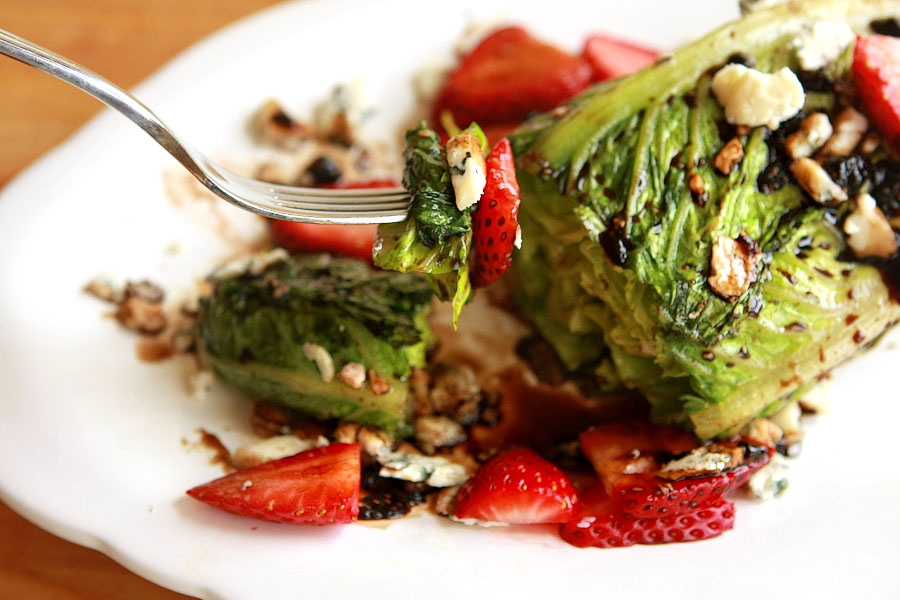
Drizzle On A Sunny Day
Although I began cooking recreationally—and my mother attests I am a self-taught cook—people often think I had professional culinary training. This could not be further from the truth! People assume this Must Be Professional when their food is vibrant, their veggies are golden and crispy, and a simple salad bursts with sweet and tangy flavors. Here is the secret, Manna friends: technique. Once I got the hang of some basic cooking techniques, my own meals were consistent in their quality and taste—meaning less frustration and discarded leftovers in the end! I love sharing techniques because it shoves intimidation out of your kitchen.
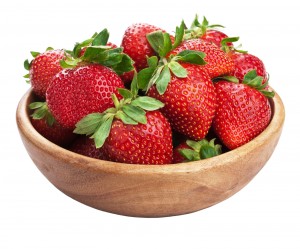 One of my favorite techniques is roasting. But it’s summer, and a sweltering one, so I would never dream of asking you to turn on your oven. July is a beautiful time for tomatoes and herbs, peppers and peaches. And they’re juicy enough right now to simply eat raw… until it’s time for a little drizzle (and I don’t mean rain).
One of my favorite techniques is roasting. But it’s summer, and a sweltering one, so I would never dream of asking you to turn on your oven. July is a beautiful time for tomatoes and herbs, peppers and peaches. And they’re juicy enough right now to simply eat raw… until it’s time for a little drizzle (and I don’t mean rain).
Now “Balsamic Reduction” sounds like a phrase you might be more likely to encounter in a televised cooking competition rather than your own kitchen. It is a simple, heavenly technique that requires that you know how to turn your stovetop burner on and off—that’s it! Imagine you’re taking a bottle of chocolate syrup and drizzling it over your favorite foods; that’s what this will look like in the end. Drizzle your balsamic creation over sliced tomatoes and peaches or over grilled eggplant and grilled chicken. Adorn watermelon and strawberries for utter bliss. This thick sauce packs a true punch once the flavor is concentrated, so a little goes a long way to making your meals memorable. Better yet: this fits into any budget.
Vinegar is a great substitute for salt because it adds a salty-tang to your food while very low in sodium. It has few calories and no fat. Balsamic vinegar also has antioxidants that help your body fight potentially deadly illnesses such as heart disease or cancer.
Balsamic Reduction
Adapted from Lidia’s Italy
You’ll need:
Balsamic Vinegar (this needn’t be an expensive bottle)
A medium saucepan
The sauce will reduce greatly (get much lower in your pot), so start out with 1 cup of vinegar if you want a personal serving. You could also reduce an entire bottle of vinegar, since it will store well in the fridge for over a year.
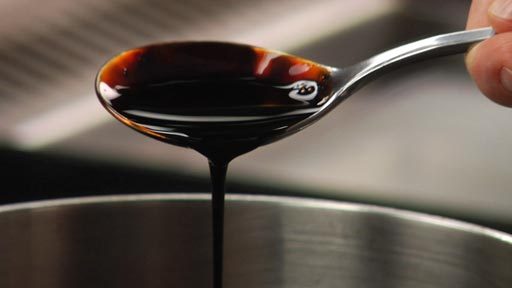 Pour the balsamic vinegar into a heavy bottomed saucepan and place over medium-low heat. Adjust the heat to maintain a steady simmer and allow the vinegar to reduce slowly. After about 5-10 minutes (or 20 minutes for a large quantity), when it has lost more than half of its original volume, the vinegar will start to appear syrupy, and you should watch it closely.
Pour the balsamic vinegar into a heavy bottomed saucepan and place over medium-low heat. Adjust the heat to maintain a steady simmer and allow the vinegar to reduce slowly. After about 5-10 minutes (or 20 minutes for a large quantity), when it has lost more than half of its original volume, the vinegar will start to appear syrupy, and you should watch it closely.
To use as a glaze, cook the sauce to 1/3 of its original volume. It should be the consistency of molasses, thick but still spreadable. For use as a condiment and an elixir to drizzle over fruits and vegetables, reduce the vinegar even more, until it approaches one-quarter its original volume. Slow bubbles will rise from the syrup and it will take on the consistency of honey, leaving a thick coating on a spoon. Pour it through a small strainer into a heatproof bowl or measuring cup. Use a heatproof spatula or spoon to clean out the saucepan before it sticks to the pot for good! Drizzle on the syrup while it is still warm.
Store in the refrigerator, in a sealed container. It will congeal but keep indefinitely. To use, spoon the hard sauce into a bowl or heatproof measuring cup and heat it slowly in a pan of hot water or at low level in the microwave. For a thinner consistency, stir in drops of hot water.
SURPRISE TIP from Lindsey: You can do this with orange juice, too! The orange juice reduction makes an out-of-this-WORLD salad dressing.



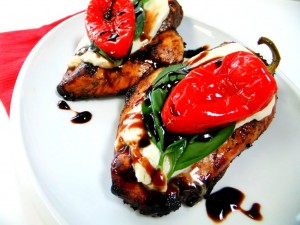
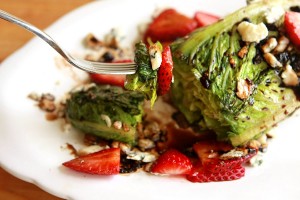
Engage us on Facebook
Follow us on Twitter
Tweets by @mymcmedia